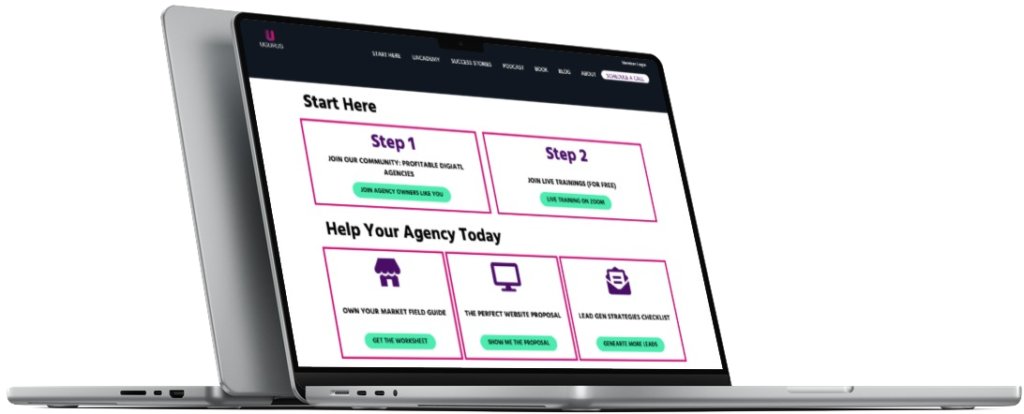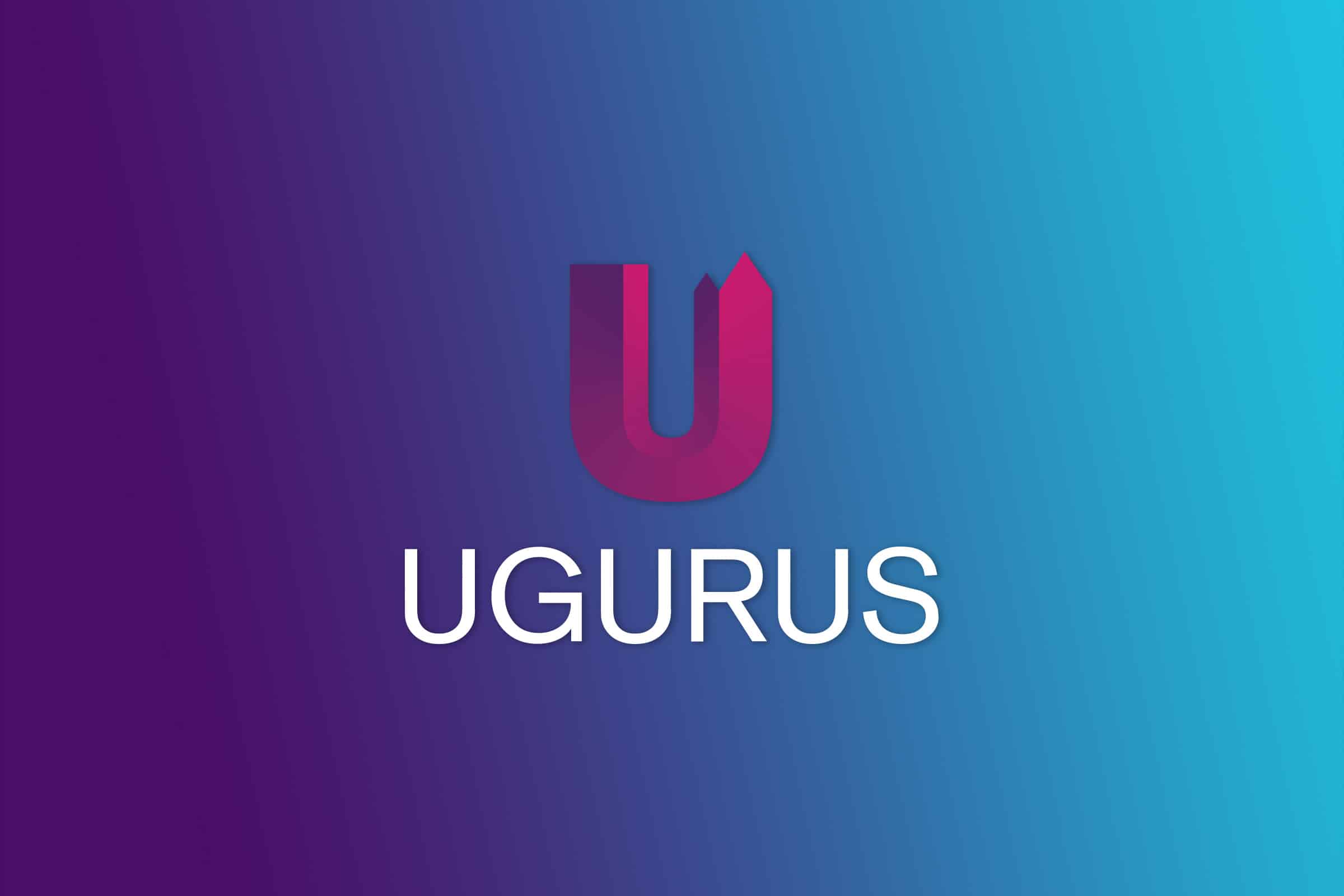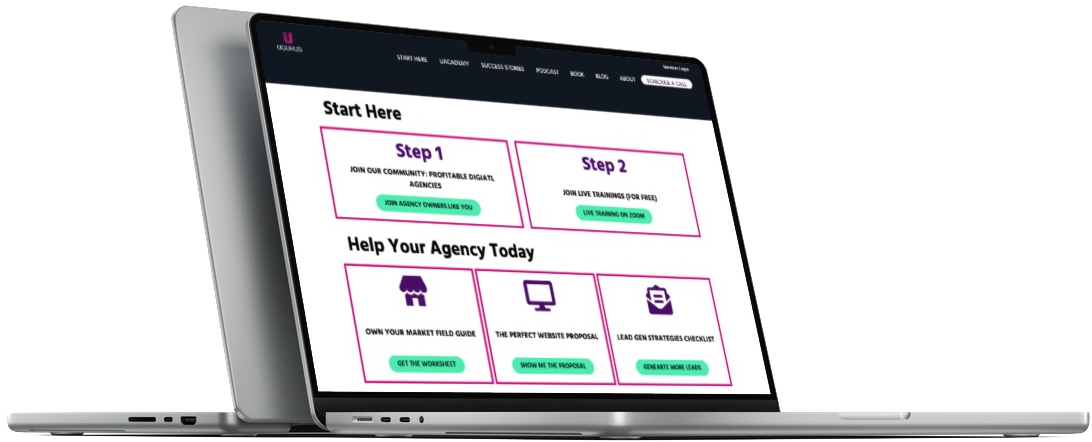Your qualification call is the first interaction you’ll have with a potential client. You’ve got to figure out if they’re a good fit as quickly as possible.
What’s the biggest problem that you have with your qualification calls?
For a lot of agency owners, it’s figuring out who are the good fits and who are just fishing around for prices.
You want plenty of the former and none of the latter.
Your qualification calls will help you to separate one from the other. But you need to know what to ask so that you can get them done as quickly as possible.
That’s what the Qualified Call Workshop is all about. It’s about getting that first impression right so you waste as little time with bad fits as possible.
I’m going to get into the principles behind it all in a little while. First, let’s look at the problems that a bad qualification process causes.
The Problems
The big problem is that you waste time with bad fits.
I’m happy to give anybody 10 minutes of my time. What I’m not happy to do is give somebody six hours of my time only to find that it wasn’t worth it.
You’ve probably felt that pain yourself.
You’re in the third discovery meeting and you’re kicking yourself because you’ve let it get this far. But at that point, you don’t want to be rude. You’re so invested in this prospect that you feel like you have to present a proposal. And that’s only going to take up even more of your time.
You want to avoid that prospect in 15 minutes rather than finding yourself sitting there in hour six trying to figure out how to get rid of them.
The other problem is that you just don’t know what to ask on the call. That means that bad fit prospects get through. You only find that they’re bad fits once you’re a few hours into discovery.
Worse yet, not knowing what to ask can mean that you’re missing out on good fits.
The Opportunity
The opportunity here is pretty simple.
You get to quickly disqualify the bad fits. They get the red card and you get to qualify as many of the good fits as possible.
Better yet, with a great qualification structure you can actually qualify more leads.
Think about it like this. If you’re booking somebody in for a 60-minute call with little qualification, you’re limiting yourself to one prospect per hour.
As you start to get your marketing engine up and running, you create an environment where you have these conversations faster.
That’s what this workshop is all about. You get to pull that first call down to 15 or 20 minutes. And that means you’re raising the number of prospects you talk to in an hour to three or four.
That allows you to block out your time more effectively and focus on prospects who will actually fit the agency.
With all of that covered, let’s jump into the Five Hot Principles for building a qualification call.
Hot Principle #1 – Qualify Your Ideal
You should have a specific idea of what your bullseye is before you ever have your qualification call.
Your bullseye is the ideal client for your business.
Around them, you have the people who are in the ballpark. And on the edges of the target, you’ve got the people you’d only take on if you really need the money.
Finally, there are the people who are so out of bounds that they’re not an option for your agency.
Nine times out of 10, you’re trying to identify the out of bounds people so you can move them along. You don’t necessarily want to disqualify the people on the edges or those in the ballpark. You may need them later.
It’s generally not a binary thing. In fact, you can think of it as a scale. In an ideal world, you’ll only ever take on the bullseyes. However, the reality is that you’ll occasionally need to take on some clients who don’t quite hit the mark.
The point is that you figure out your ideal and qualify against it.
At UGURUS, we have a scoring system that we apply to our questions. It runs from -20 up to 60. Sixty is the ideal client and -20 covers the out of bounds people.
Aim for the 60 but recognize that you sometimes need to blur the lines a little.
Hot Principle #2 – Schedule Your Blocks
Hopefully, you’re using something like Calendly or Time Trade to book your qualification meetings.
If you’ve tied your website into an appointment funnel, you need to block out your time. (More on time blocking here.)
Think about it as though you’re creating your inventory. Let’s say you can block out five hours per week for your qualification calls. If you get those calls down to 15 minutes each, that’s 20 prospects that you’ll talk to in a week.
Your numbers might differ depending on how many leads your business needs for where it is right now.
The point is that you figure out what you need to keep the agency growing and block the time out. If you’re not filling those blocks, you may have a marketing problem to deal with. (More on building a marketing engine here.)
Hot Principle #3 – Take the Reins Immediately
Once you get on a qualification call, you need to establish control.
You need to take the reins of the conversation immediately. That’s going to ensure your clients don’t control the process.
To do this, you need a specific call frame and a call agenda.
So, you don’t do 10-minute strategy calls. You frame it as something like “Getting Started” or “The Audition Call”.
Straight away, you’re telling the prospect that you’re auditioning them to see if they’re a good fit for your agency.
With the specific agenda set up, you’re establishing control and letting the prospect know that you’ll take the reins. Now, they’re not coming into the call expecting to be able to dictate it all to you. They know that they’ve got 10 or 15 minutes and that you will ask a series of questions.
Hot Principle #4 – Filter Out Bad Fits
Hopefully, you’ve got your marketing dialed in already.
The perfect situation is that most people who get through to your qualification call actually qualify. That tells you that your marketing hits the right marks and targets the right people. If you’re finding that most people don’t qualify, you might have to dig deeper into what’s going wrong before people get to the call.
With the call itself, you’re just doing a mini-discovery. You’re not trying to dive deep here. Instead, you’re looking for any immediate red flags that tell you that the client isn’t a good fit.
But you’re not trying to get rid of people who are in the ballpark.
For example, let’s say you’re working with private practice dental practices.
You get a call with a corporate dental practice. It isn’t an ideal fit, but it’s in the ballpark, right?
But if you get a call with a mom and pop café, you know straight away that they’re out of bounds. Being in the wrong target industry is your big red flag.
You’re trying to identify if the prospect’s in the general vicinity of what you help with. If they are, it probably makes sense to invest an hour into figuring out if you can help in any way.
The key is to filter out the bad fits. That’s the purpose of qualification. It’s not for doing full discovery or trying to sell something.
Hot Principle #5 – Sell the Next Step
If you believe that the prospect qualifies, you’ve got to sell the next step.
You need to become the tour guide who tells them what’s around the corner. It’s like you’re the guy on top of the bus in London who’s saying “And on your right, you’ll see Big Ben. Coming up is Buckingham Palace.”
The idea is to build interest and engage.
Once you’ve made the decision that this is somebody you want to pursue, talk to them about the next step. Sell them on why they should do a strategy call and why they should engage with you further.
And if they don’t qualify, thank them for their time and point them in the direction of someone who can help.
Better Qualifying Means More Leads
Having a structured qualifying process means you get more good leads.
For one, you’re getting through the calls faster. Something that previously took an hour now takes 15 minutes. That means you’re talking to more people, which means more potential clients for your agency.
And they’re better clients too. You know what you’re looking for and know what your boundaries are. Anyone who falls out of that target zone is a bad fit who’ll just cost you time and resources.
Start applying these principles to your qualifying calls.
And if you need help, UACADEMY is here. We’ll work with you to put all of this into practice so you create a better structure around your qualifying calls.
Do you want to find out if you’re a good fit for us?
Schedule your Agency Growth Session today to get started.
GET YOUR FREE AGENCY ACCELERATOR PACKAGE






